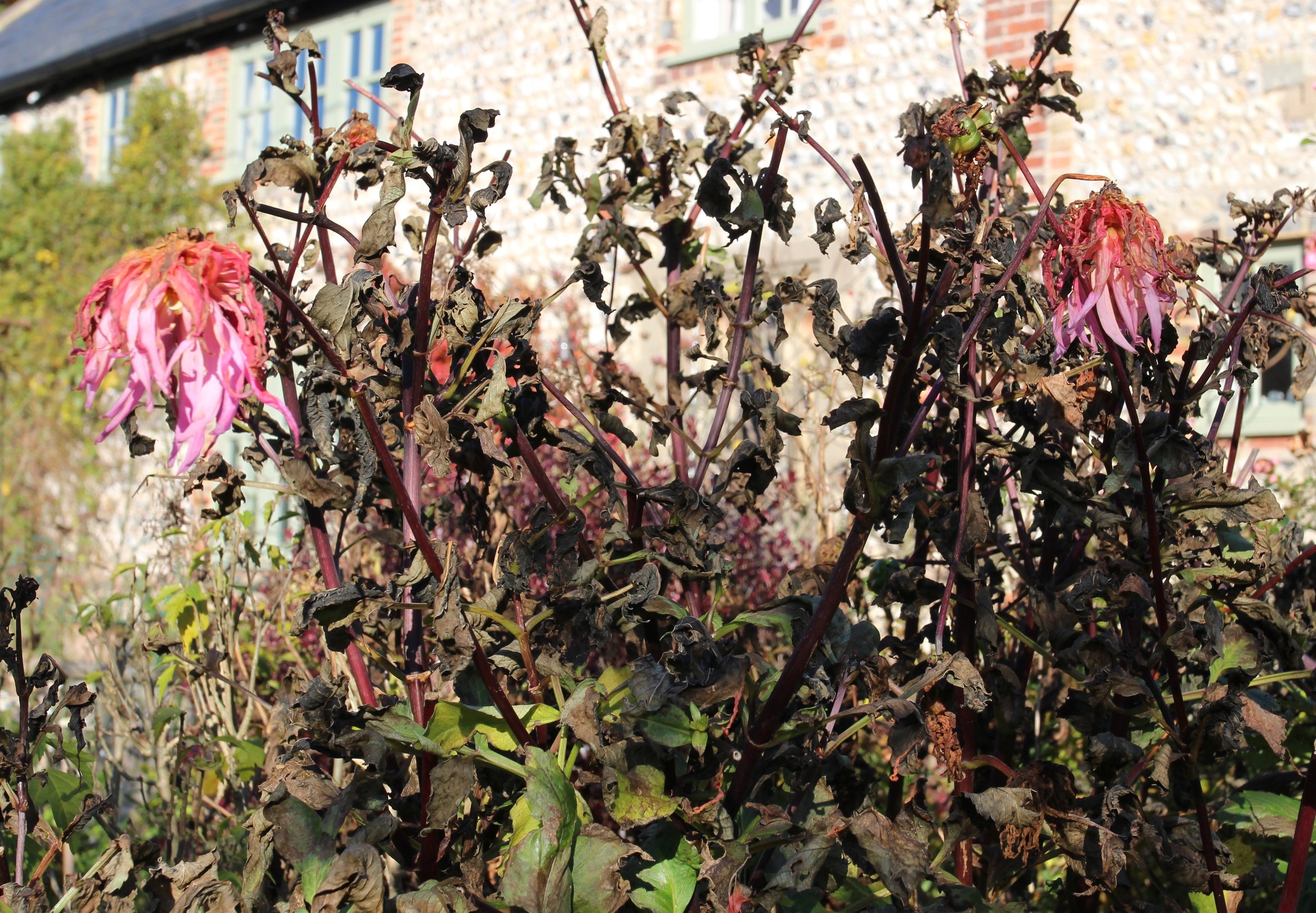Some people complain about November and dash off to sunnier climes. Some complain and stay but just carry on complaining. Others, more philosophical, more stoical, accept November for what it is: mostly murky but with the occasional day of joy. Me: I love November because we get our Puckamuck delivered. Lovely stuff, Puckamuck. Good enough to eat. Have a look:
That’s my pal Matthew delivering two and half cubic metres of steaming stable manure last week on one of those joyful sunny days. Puckamuck and sun: double joy.
And it means it’s the time of year to begin renovating the flower beds and tuck up those wimpish dahlias before the winter freeze does for their tubers. If they had their way they’d be off to sunnier climes too but because they can’t they sulk and turn up their toes at the first light frost. When the going’s good they look arrogantly wonderful but prick their egos with some cold and they snivel and expect sympathy. At which point we cut them down to size and wrap them up in, guess what, Puckamuck.
But today was one of those days when it’s best to be inside: dreary, dark, drizzly and chilly. Help, I’m beginning to sound like a dahlia.






































































